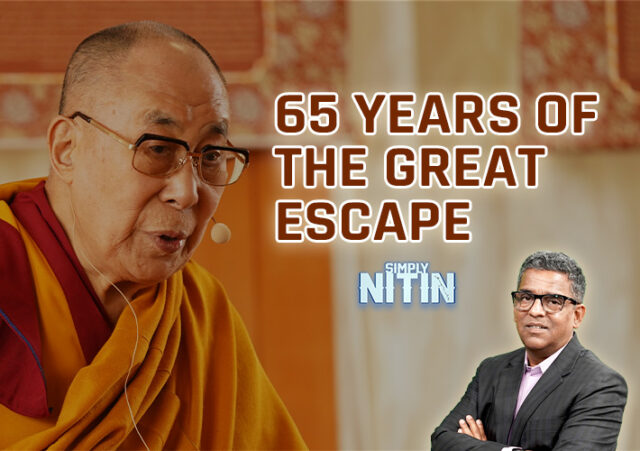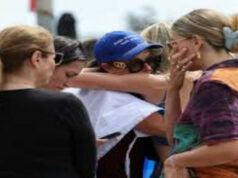It was this week sixty-five years ago that will remain etched in the minds of Tibetans as a watershed. On March 31, 1959, His Holiness the 14th Dalai Lama, Tenzin Gyatso, entered India to seek refuge. It was a particularly troublesome month for the Tibetan administration when Chinese troops marched into Tibet and took control. The Dalai Lama was barely 23 then and there was a sense that he could be arrested by PLA troops.
On March 17, 1959, the Dalai Lama, his family members and some of his close associates left the Potala Palace in Lhasa. They travelled south towards the McMahon Line (which separates Tibet from India) and the destination was India, the North East Frontier Agency or NEFA (which is now Arunachal Pradesh).
The Dalai Lama was dressed as an ordinary Chinese soldier. The journey took about a fortnight, through inhospitable terrain and mountain passes. They also had to watch out whether Chinese soldiers were on their trail.
In one of his blogs, noted Tibetologist and author Claude Arpi gives a vivid description of what followed.
On March 26, they reached Lhuntse Dzong, north of NEFA, from where the Dalai Lama sent a message to then Prime Minister Jawaharlal Nehru. It said: “Ever since Tibet went under the control of Red China and the Tibetan Government lost its powers in 1951, I, my Government officers and citizens have been trying to maintain peace in Tibet, but the Chinese Government has been gradually subduing the Tibetan Government. In this critical situation we are entering India via Tsona (the last town north of the McMahon line in Tibet). I hope that you will please make necessary arrangements for us in the Indian territory.”
The very next day, Assistant Political Officer of Tawang TS Murthy was told to go to the border. He reached there on March 31 and that was the day the Dalai Lama and his entourage crossed the border at Khenzimane in the Kameng sector, which is to the north of Tawang. A few kilometres away at Chuthangmu, a battalion of 5 Assam Rifles escorted the entourage to the renowned Buddhist monastery in Tawang.
In his response to the Dalai Lama’s message, Nehru said: “My colleagues and I welcome you and send you greetings on your safe arrival in India. We shall be happy to afford the necessary facilities for you, your family and entourage to reside in India. The people of India who hold you in great veneration will no doubt accord their traditional respect to your person.”
He remains a respected figure in India and beyond. In an exclusive interview with StratNews Global that first aired in January 2020, he called himself the longest guest of the Indian government and spoke about a range of issues. Most of it would not be music to China’s ears.
Also See:
Nitin A. Gokhale is a media entrepreneur, one of South Asia's leading strategic affairs analyst and author of over a dozen books so far on military history, insurgencies and wars.
Starting his career in journalism in 1983, he has since led teams of journalists across media platforms.
A specialist in conflict coverage, Gokhale has covered the insurgencies in India’s North-East, the 1999 Kargil conflict and Sri Lanka’s Eelam War IV between 2006-2009.
Gokhale now travels across the globe to speak at seminars and conferences, and lecture at India’s premier defence colleges. He has founded three niche portals, Bharatshakti.in, stratnewsglobal.com and Interstellar.news.





